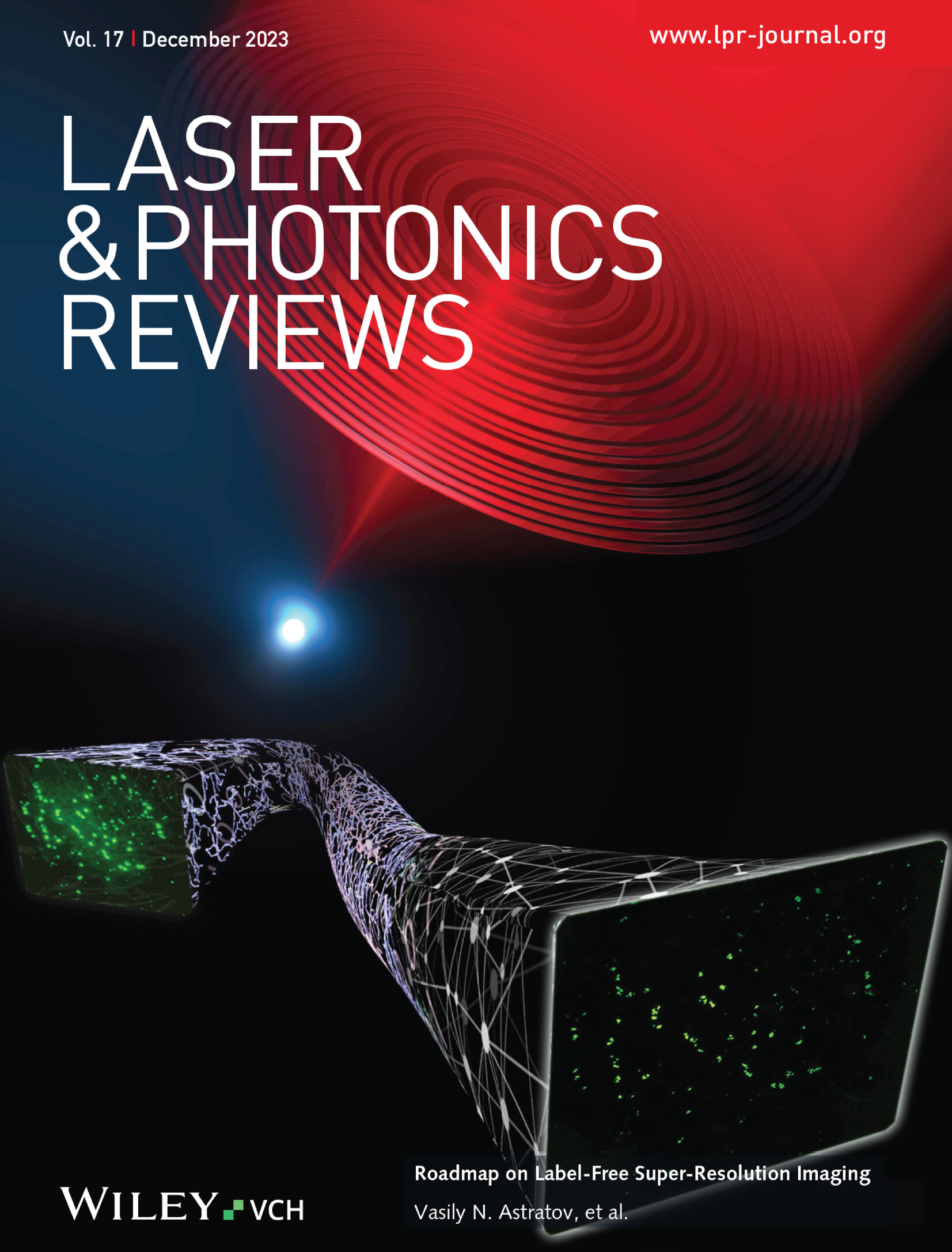用于低串扰高密度光子卷积计算的级联微环谐振器
IF 9.8
1区 物理与天体物理
Q1 OPTICS
引用次数: 0
摘要
基于微环谐振器(MRR)的光子神经网络(PNN)因其结构紧凑、功耗低而备受关注。然而,在频谱密度和网络性能方面仍有很大的改进空间。本文介绍了一种基于双级串行耦合环形谐振器(DCRR)的新型 PNN 架构,该架构结合了专门设计的光电信号调制和检测电路,实现了具有高频谱密度、鲁棒性和准确性的 PNN。DCRR 的消光比高达 55 dB,带宽窄至 0.17 nm。通过系统性创新,它解决了光电神经网络中因光强非负性而导致的负数表示难题,利用基于单个光电二极管的架构实现了正负加权操作。在数字和细胞边缘提取和分类任务中进行的实验验证表明,准确率高达 95% 以上。与具有相同参数的单环计算架构相比,这种方法大大减少了通道间串扰和光谱间距,使光谱密度提高了六倍,计算密度达到 2.48 TOPS/mm2。此外,利用基于 DCRR 的非线性激活,收敛速度更快,识别精度更高。该方法为实现高密度、高精度光子计算奠定了技术基础。本文章由计算机程序翻译,如有差异,请以英文原文为准。
Cascaded Micro‐Ring Resonators for Low‐Crosstalk High‐Density Photonic Convolutional Computing
Photonic neural networks (PNNs) based on micro‐ring resonators (MRRs) have attracted significant attention for their compactness and low power consumption. However, there remains substantial room for improvement in spectral density and network performance. Here, a novel PNN architecture is introduced based on double‐stage serially coupled ring resonators (DCRRs), incorporating specially designed optoelectronic signal modulation and detection circuits, achieving a PNN with high spectral density, robustness, and accuracy. The DCRR achieves an extinction ratio of 55 dB and a narrow bandwidth of 0.17 nm. Through systematic innovation, it addresses the challenge of representing negative numbers in optoelectronic neural networks caused by the non‐negativity of light intensity, enabling positive and negative weighting operations using a single photodiode‐based architecture. Experimental validation in digital and cell edge extraction and classification tasks demonstrates high accuracies above 95%. Compared to single‐ring computing architectures with the same parameters, this method significantly reduces inter‐channel crosstalk and spectral spacing, leading to a sixfold increase in spectral density and achieving a compute density of 2.48 TOPS/mm2 . Furthermore, utilizing DCRR‐based nonlinear activation results in faster convergence speed and higher recognition accuracy. The method provides the technical foundation for achieving high‐density, high‐precision photonic computing.
求助全文
通过发布文献求助,成功后即可免费获取论文全文。
去求助
来源期刊
CiteScore
14.20
自引率
5.50%
发文量
314
审稿时长
2 months
期刊介绍:
Laser & Photonics Reviews is a reputable journal that publishes high-quality Reviews, original Research Articles, and Perspectives in the field of photonics and optics. It covers both theoretical and experimental aspects, including recent groundbreaking research, specific advancements, and innovative applications.
As evidence of its impact and recognition, Laser & Photonics Reviews boasts a remarkable 2022 Impact Factor of 11.0, according to the Journal Citation Reports from Clarivate Analytics (2023). Moreover, it holds impressive rankings in the InCites Journal Citation Reports: in 2021, it was ranked 6th out of 101 in the field of Optics, 15th out of 161 in Applied Physics, and 12th out of 69 in Condensed Matter Physics.
The journal uses the ISSN numbers 1863-8880 for print and 1863-8899 for online publications.

 求助内容:
求助内容: 应助结果提醒方式:
应助结果提醒方式:


